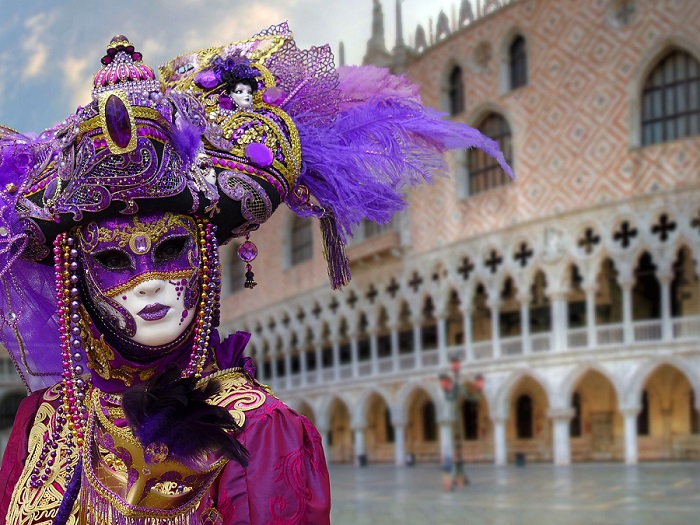BLOG
VENICE'S CARNIVAL - The disguise

Centuries of festivities have reached their peak during the Enlightenment period: the Most Serene One (Venice) became a place where forbidden things were happening,
among which, prohibited games, famous in all Europe. To ad even more mystery and fascination, there were the adventures of the Venetian writer Casanova, well known as the symbol of a free spirit used to give luxuriant feasts. But the Carnival was for the politicians a period of allowing the masses to have fun and enjoy themselves. Behind the masks were hiding public figures of authority and members of the aristocracy, enjoying anonymity. It was a way of avoiding possible rebellions - which was nothing new if we think about the Roman emperors who used to offer shows for the masses, in order to control them.
One of the most common disguises used even today is the Bauta, a white mask used not just hide someone's face, but the social status as well'; with origins from the Latin "Maschera". Women would wear la Moretta, a mask imported from France, and it was being held on one's face with the help of a button held with the teeth. The mask was a great success, and became a seduction weapon, making the woman wearing intriguing and full of secrets. Because by not allowing her to talk, it gives her the opportunity to chose who to allow to speak, therefor revealing her true feelings. During the Carnival, in order to be allowed in the places of rich and famous, the middle class women hid their faces behind a Moretta. That way, during the celebration of the Carnival, anybody could use the Bauta or the Moretta to maintain anonymity and play prohibited games.

